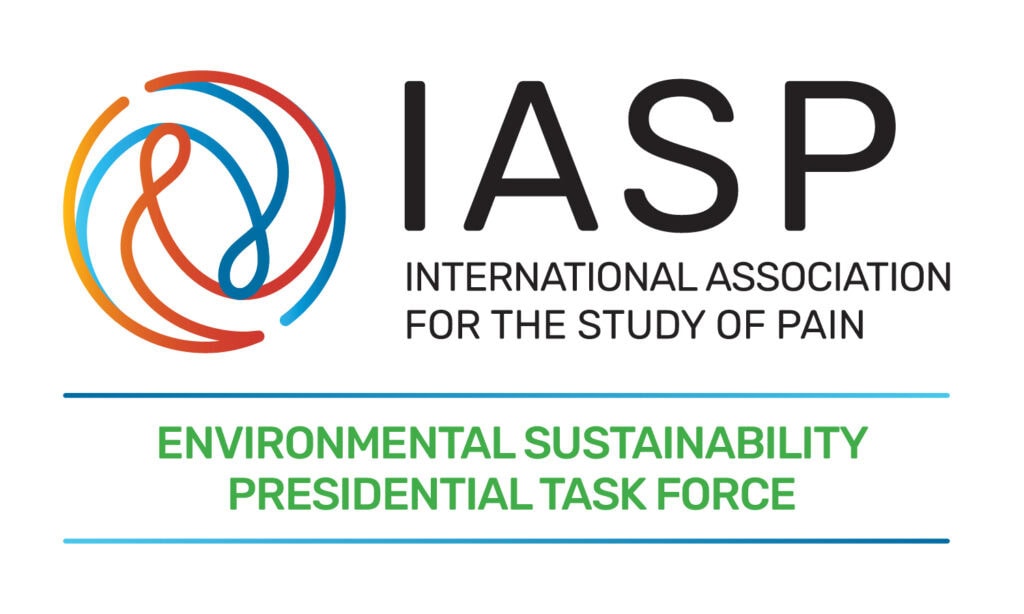In August 2024, Andrew Rice initiated a Presidential Task Force on Environmental Sustainability. The task force aims to address global warming and sustainability issues, which have been recognized by WHO and the 2015 Lancet Commission as major threats to global health. IASP must contribute to mitigating these challenges. The task force will consider two main areas:
Environmental Impact of Clinical and Research Activities:
- Pharmaceutical Contamination of Water: Addressing drug contamination in wastewater, particularly those used in pain treatment, and considering a position statement with hazard index information in treatment guidelines.
- Microplastic Pollution: Tackling pollution from pharmaceutical packaging and lab equipment, potentially formulating a position statement or promoting initiatives like the Green Lab.
- Reducing Carbon Footprint: Learning from the anesthesia community and modeling carbon-neutral pathways for pain treatments, scrutinizing travel footprints for in-person pain management programs, and exploring alternatives.
Mitigating the Environmental Impact of IASP Activities:
- Organizational Activities: Identifying areas to reduce environmental impact in routine administrative tasks and drafting a sustainability strategy and action plan.
- Conferences and Events: Carefully consider the environmental impact of conferences, teaching camps, and meetings, and design mitigations without compromising highly valued activities. This may involve setting a specific remit for the task force to balance environmental concerns with IASP’s strategic mission.
Environmental Sustainability Subgroups
Subgroup 1: Survey on environmental sustainability and pain for the IASP members (Sarah Love-Jones, Prit A. Singh, Katy Bell, Maria Dolma Santos, Romy Parker, Johan Vlaeyen and Andrew Rice)
Subgroup 2: Developing a declaration of environmental sustainability for IASP as a global organization (Ulrike Bingel, Marie-Eve Hoeppli, Mariana Avila, Prit A Singh, Ursula Wesselmann, Tim Oberlander, Sarah Love-Jones, Katy Bell, Maria Dolma Santos, Romy Parker and Andrew Rice)
Subgroup 3: Systematic review on analgesics and water contamination (Roger Knaggs, Ursula Wesselmann, Eveliina Glogan, Leon Barron, Kris Thayer, Shania Liu, Sarah Love-Jones, Anupa Pathak, Katy Bell, Johan Vlaeyen and Andrew Rice)
Subgroup 4: Systematic review on the influence of air pollution on chronic pain (Tim Oberlander, Anupa Pathak, Colleen Pawliuk, Eveliina Glogan, Ursula Wesselmann, Mariana Avila, Johan Vlaeyen, and Andrew Rice)
Subgroup 5: Green Pain Lab guideline (Ursula Wesselmann, Marie-Eve Hoeppli, Johan Vlaeyen, and Andrew Rice)
Subgroup 6: Development of guidelines on environmentally sustainable pain management (Prit A. Singh, Mariana Avila, Sarah Love-Jones, Anupa Pathak, Ursula Wesselmann, Katy Bell, Anna Hood, Maria Dolma Santos, Susan Njoka, Romy Parker, and Andrew Rice)
Subgroup 7: Development of guidelines on environmentally sustainable pain education (Michael Falcon, Marie-Eve Hoeppli, Mariana Avila, Prit A Singh, Tim Oberlander, Anupa Pathak, Ursula Wesselmann, Anna Hood, Maria Dolma Santos, Susan Njoka, Ulrike Bingel, Romy Parker, and Andrew Rice)
Subgroup 8: Calculation of the ecological footprint of IASP activities (Steve Gardner, Marie-Eve Hoeppli, Johan Vlaeyen, Romy Parker, and Andrew Rice)


